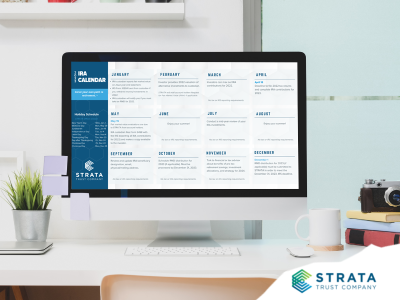A four-year college degree may not be right for everyone, but studies show that it can pay off. In 2021, women aged 25-34 with at least a bachelor’s degree earned a median of $60,540, compared with $34,590 for those with a high school diploma. Men in the same age group with a bachelor’s degree had median earnings of $75,430 compared to $42,460 for those with a high school diploma.1
Unfortunately, the cost of a college degree can be a barrier to obtaining that education – especially if a student didn’t have money set aside for them early enough to grow through investments in a Coverdell Education Savings Account (ESA) or 529 college savings plan. This can be particularly true for middle- and upper middle-income families who couldn’t afford to save early and now, with a healthier income, do not qualify for financial aid based on the income guidelines of the federal student aid program.
Whether looking to fund their own education or someone else’s, your clients may want to consider some retirement savings and tax strategies instead of a high interest private loan.
IRAs
 Although IRAs are intended to accumulate wealth for retirement, they can provide a pool of assets to help pay for college expenses while the IRA owner continues to save for retirement. IRA owners may prefer to take the minimum amount needed each year so as not to significantly increase their income for each year’s FAFSA application.
Although IRAs are intended to accumulate wealth for retirement, they can provide a pool of assets to help pay for college expenses while the IRA owner continues to save for retirement. IRA owners may prefer to take the minimum amount needed each year so as not to significantly increase their income for each year’s FAFSA application.
- Roth IRA – Unlike distributions from other retirement savings arrangements, Roth IRA distributions are rarely taxable. Parents, or the student if they have a Roth IRA, can withdraw some of their Roth IRA assets tax-free to help pay for college expenses. Most individuals don’t meet the requirements for a tax-free qualified distribution of the entire account (age 59½, disabled, deceased, or buying a first home) when they or their kids are college age, but they can still withdraw the amounts they have contributed or converted to a Roth IRA. Because of the Roth IRA distribution ordering rules, these amounts can be withdrawn tax free at any time in a nonqualified distribution, without tapping into the taxable investment earnings in the Roth IRA. If Roth conversion assets are withdrawn within five years of the conversion and the IRA owner is still younger than 59½, the distribution will be subject to a 10% early distribution tax, but higher education expenses are an exception to this additional tax for IRA distributions. Some families prefer saving for education expenses in a Roth IRA over an ESA or 529 account because there is no penalty if the assets are not needed for education expenses. The assets can continue growing for the Roth IRA owner’s retirement and the investment options can be much more diverse. Additionally, Roth IRA assets do not count against the parents or the student’s assets when applying for financial aid (although the IRA distribution will need to be included as income in the following year’s FAFSA application).
- Traditional IRA – Unless a Traditional IRA has been funded with only nondeductible dollars, most distributions will be taxable to the IRA owner. But if the IRA owner is younger than 59½ and using the distribution to pay for higher education expenses, the distribution will not be subject to the 10% early distribution tax.
WORKPLACE RETIREMENT PLANS
 Retirement plans, like a 401(k), 403(b), or governmental 457(b) plan, are designed to keep savers from accessing their assets before retirement, or at least before they stop working for the employer, with some exceptions for financial emergencies. Even when a plan participant is eligible to take a distribution from a workplace plan, the distribution will be taxable and subject to the 10% early distribution tax if the participant is under the age of 59½ (excluding nontaxable Roth assets). Higher education expenses are not an exception to this additional tax when taking money out of a workplace plan. But there are two optional plan features employers may adopt that can be helpful for paying college expenses:
Retirement plans, like a 401(k), 403(b), or governmental 457(b) plan, are designed to keep savers from accessing their assets before retirement, or at least before they stop working for the employer, with some exceptions for financial emergencies. Even when a plan participant is eligible to take a distribution from a workplace plan, the distribution will be taxable and subject to the 10% early distribution tax if the participant is under the age of 59½ (excluding nontaxable Roth assets). Higher education expenses are not an exception to this additional tax when taking money out of a workplace plan. But there are two optional plan features employers may adopt that can be helpful for paying college expenses:
- Plan Loan – A participant may withdraw a portion of their retirement savings and avoid taxation on the distribution by taking a loan from their plan account. They will be obligated to repay the loan with interest within five years, usually through payroll deferrals, but the interest payments on the loan are paid to their own retirement plan account. Under certain circumstances, the interest on a retirement plan loan could beat anticipated investment returns over the short term.
- Student Loan Match – Beginning in 2024, employers have the option to add a student loan match to their plan. This feature allows employers to consider a participant’s qualified student loan payments as deferrals into the plan when calculating matching contributions into the plan on behalf of the participant. This allows participants to still accrue retirement savings even if they can’t afford to both pay on student loans and defer salary into the plan.
TAX CREDITS & DEDUCTIONS
 Two federal tax credits are also available to help taxpayers offset the cost of higher education for themselves, a spouse, or a dependent. Both tax credits can be claimed in the same year only if claiming expenses for more than one student. To be eligible to claim either credit, the taxpayer cannot be a dependent and must have modified adjusted gross income (MAGI) less than $90,000 if single, or $180,000 if married filing a joint return (2022).
Two federal tax credits are also available to help taxpayers offset the cost of higher education for themselves, a spouse, or a dependent. Both tax credits can be claimed in the same year only if claiming expenses for more than one student. To be eligible to claim either credit, the taxpayer cannot be a dependent and must have modified adjusted gross income (MAGI) less than $90,000 if single, or $180,000 if married filing a joint return (2022).
- American Opportunity Credit – A tax credit up to $2,500 per year per student may be claimed for qualified education expenses for the first four tax years of post-secondary education in pursuit of a degree, certificate, or other education credential. Up to 40% of the credit claimed is refundable. The student must be enrolled at least half-time and cannot have any felony drug convictions.
- Lifetime Learning Credit – A tax credit up to $2,000 per year may be claimed for qualified education expenses for an unlimited number of years. This credit is not refundable.
A taxpayer may also be able to take a tax deduction for up to $2,500 in interest paid on a student loan taken to pay for qualified education expenses for the taxpayer, the taxpayer’s spouse, or a dependent. The student must be attending school at least half-time in a program leading to a degree, certificate, or other education credential. To claim the credit, the taxpayer must have MAGI less than $85,000 if single, or $175,000 if married filing a joint tax return.
FOR MORE INFORMATION
For more information on all education savings vehicles and tax credits currently available, see IRS Publication 970, Tax Benefits for Education.
The IRS also provide tools to assist taxpayers in determining which tax credit to use:
- Compare Education Credits
- Instructions for IRS Form 8863, Education Credits
- IRS interactive tool, Am I Eligible to Claim an Education Credit?
See STRATA’s Types of SDIRAs page or contact our self-directed IRA experts for more information on self-directed Traditional and Roth IRAs.
1 CollegeBoard, Trends in Higher Education: Education Pays 2023




















